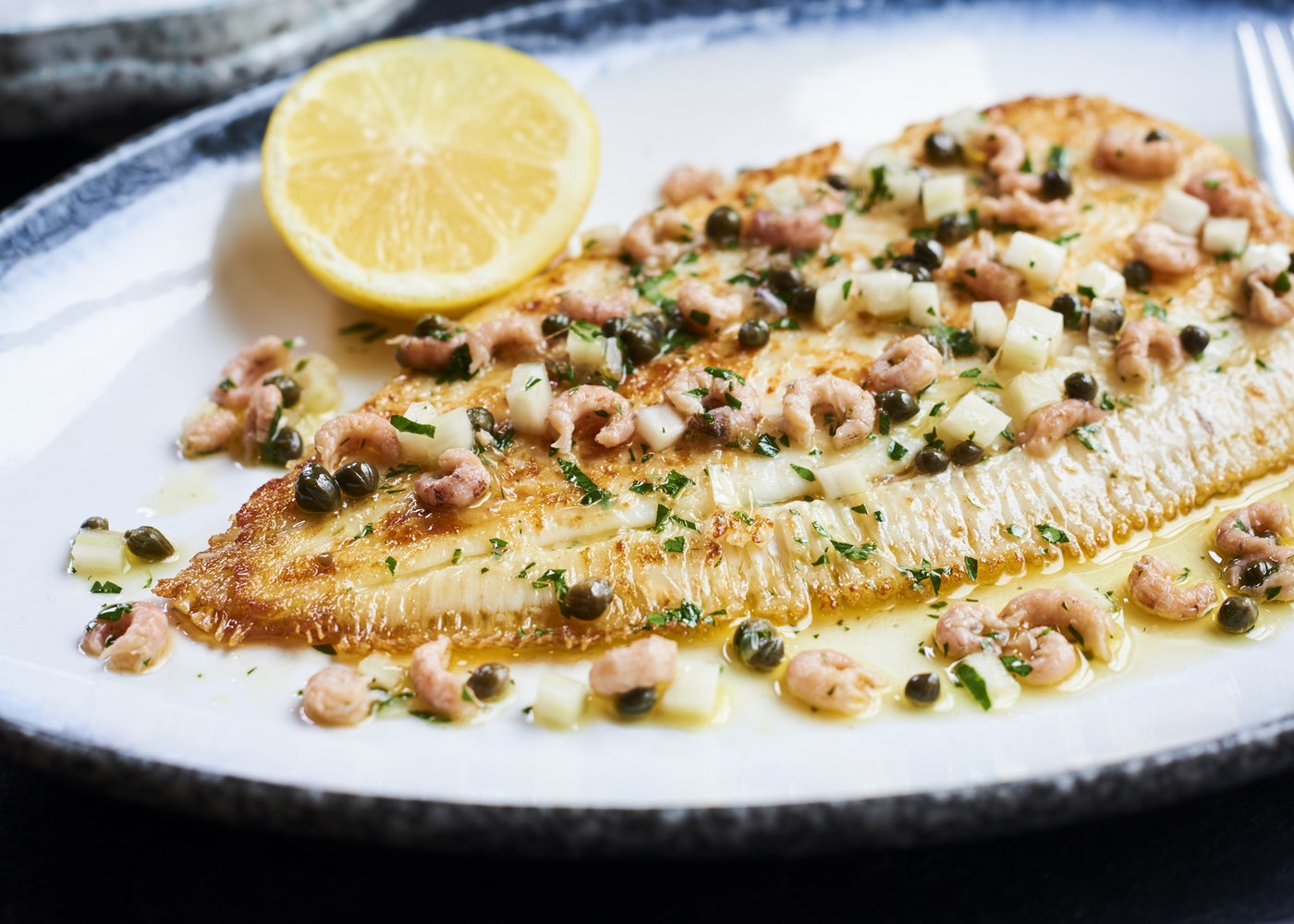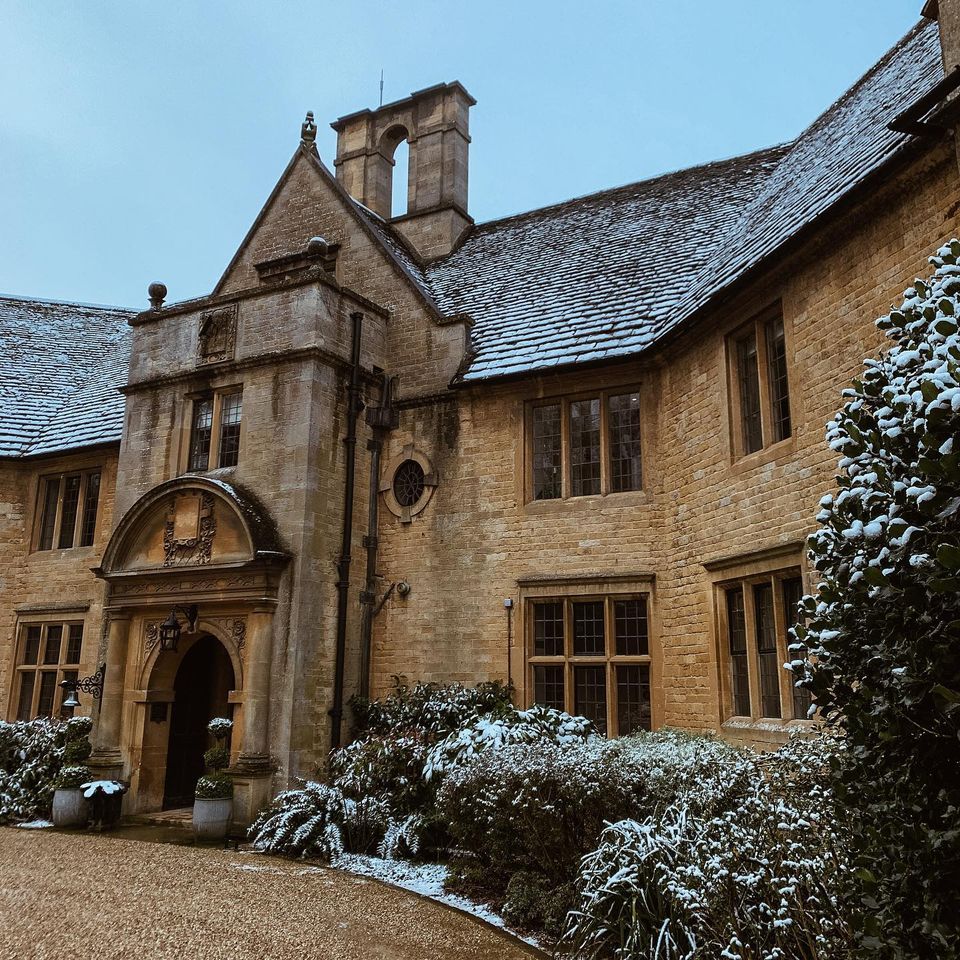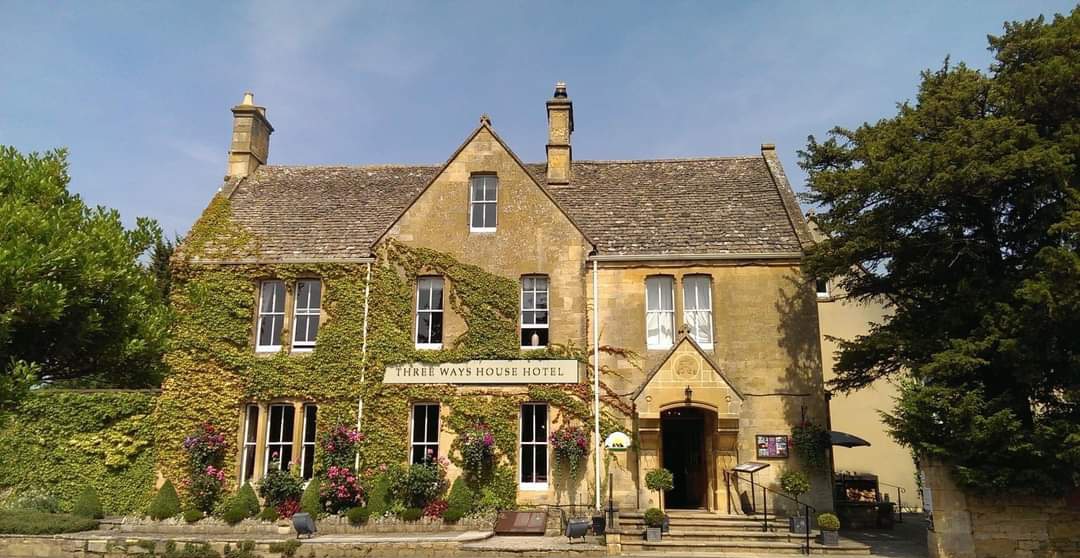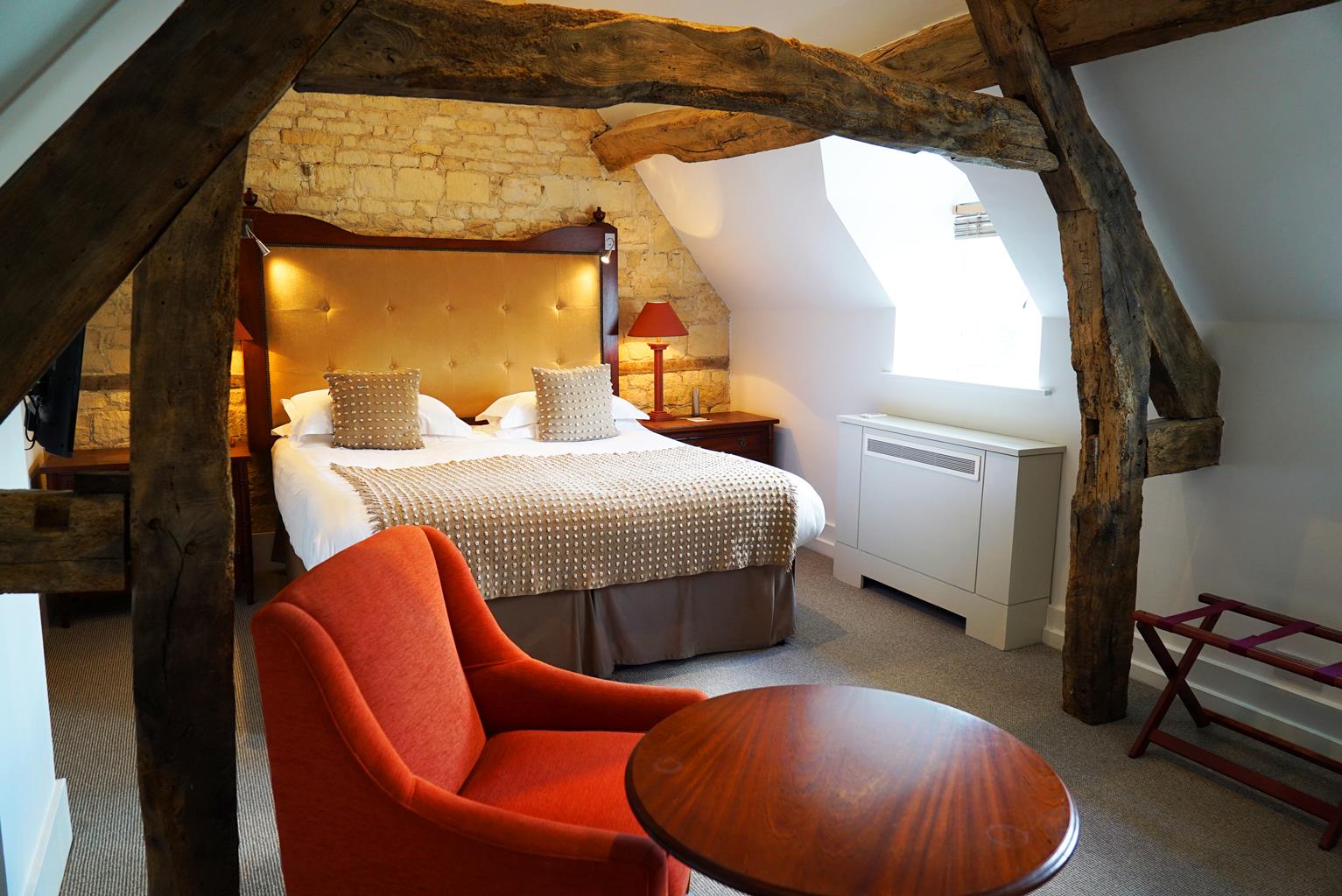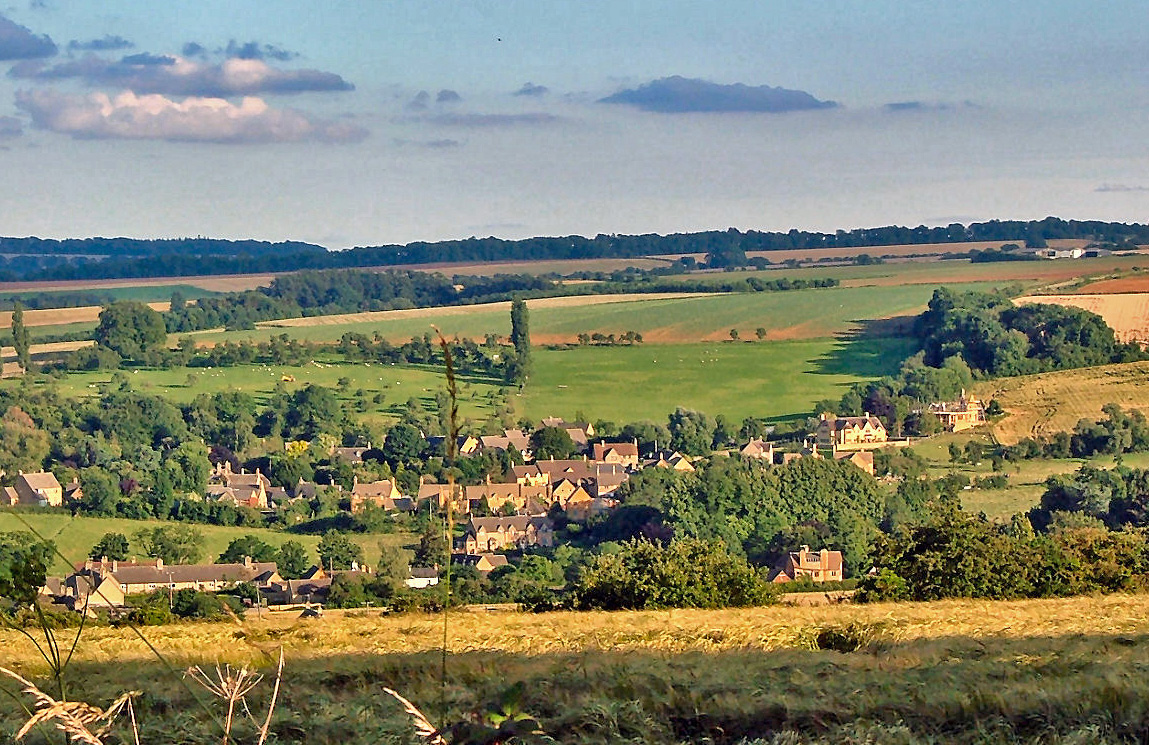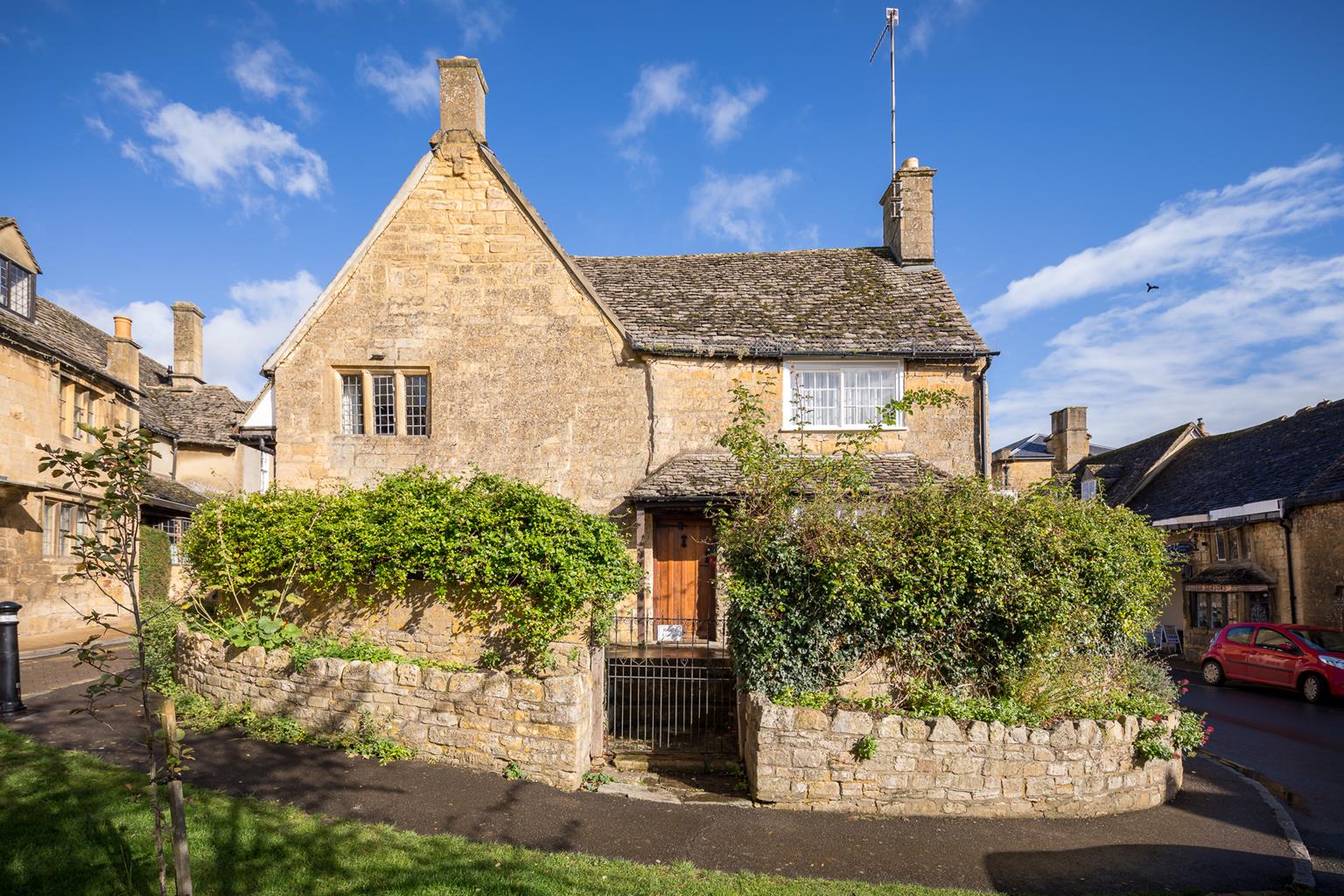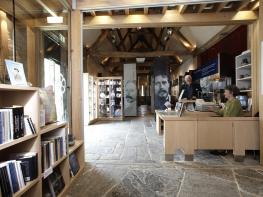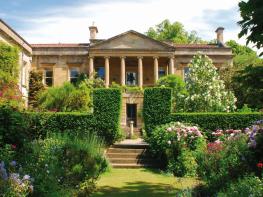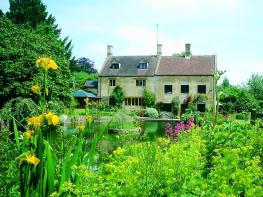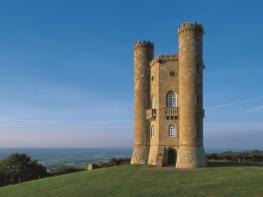Cotswold House Hotel is a luxury hotel and spa that has been at the heart of Chipping Campden…
Arts and Crafts in the Campdens

A walk between Chipping and Broad Campden follows the rise and fall of the Guild of Handicraft
2.75 miles (4.4kms)
About the walk
This walk starts in Chipping Campden, perhaps the finest of all Cotswold towns, and extends to Chipping Campden’s near neighbour, Broad Campden. Broad Campden has some exceptionally pretty houses (several of which, unusually for the Cotswolds, are thatched), an attractive pub and a 17th century Quaker Meeting House, all in a snug, overlooked fold of the Cotswold countryside. It was here, in this idyllic rural setting, that Charles Ashbee set up his Guild of Handicraft.
Charles Ashbee
Born in Isleworth in Surrey in 1863, Ashbee received his art education at King’s College, Cambridge, and was apprenticed to Bodley and Garner, a company specialising in Gothic revival architecture. As a consequence, he became involved with, and subsequently a leader of, the burgeoning Arts and Crafts Movement, the leading light of which was the poet and artist William Morris.
In 1888, Ashbee founded the Guild and School of Handicraft. Its educational programme laid great emphasis on training in the Arts and Crafts tradition, with the prominence on furniture design. Ashbee’s work shows in its sparseness and restraint all the typical elements of the Arts and Crafts Movement. He also drew attention to the activities of other artists; notably he promoted the work of the Greene brothers and of Frank Lloyd Wright.
The move to Chipping Campden in 1902 (and later to Broad Campden, where Ashbee converted a derelict Norman chapel into a place to live in 1905) was not an altogether successful one and by 1908 the Guild of Handicraft was no more, having fallen prey to competition from other, cheaper producers such as Liberty. Ashbee died in 1942. However, the craft tradition he pioneered has not altogether died out. In Sheep Street in Chipping Campden, where the original Guild shops stood just off the High Street, the silversmiths at David Hart’s continue to produce beautiful, handcrafted work in the way that Ashbee would have approved of. Alec Miller, a guildsman who came to Campden from Glasgow, describes the effect that his first sight of the town had on him; and somehow expresses the guiding principles of the Guild of Handicraft. ‘I walked up Campden’s one long street entranced and happy – a mile-long street with hardly a mean house, and with many of great beauty and richness… I could not ‘read’ the history embodied in these stone-built houses, so rich, so substantial and of such beautiful stone.’
Walk directions
From Chipping Campden High Street, walk through the arch by the Noel Arms Hotel and continue ahead to reach George Lane through a car park. Where Pear Tree Close turns right, continue ahead along the tarmac track. Pass through a small gate near some tennis courts, then reach a junction with a road. Turn left into the drive for Meadowbank House, then immediately right onto a footpath running parallel to the road. Continue straight ahead through fields where the road bends away right.
Fork right by a waymarker at the crest of the field and come to a kissing gate. Cross the drive of Maidenwell Cottage to a kissing gate. Pass through into an alley and follow it to pass the Quaker Meeting House.
Emerge at the green with the church to your left. At a junction, continue ahead to walk through the village passing The Malt House. The road bears left and uphill (no pavement, so watch out for vehicles and keep dogs close). After the turning for Blockley, go left down a road marked ‘Unsuitable for motors’. Turn right onto a stony track at the sign for Hollybush Cottage. Continue along the left lower margin of an orchard.
Go through a kissing gate, then downhill to cross a stone bridge and turn sharp right to walk along the right edge of a field. Bend slightly left then right to continue through the next field, bearing a little right to a gap. Go up the centre of the next field to a kissing gate.
Go slightly left on a fenced path across the field to pass to the right of a house surrounded by horse paddocks, with the church tower in the distance slightly right. Continue through further paddocks via three kissing gates to a woody gap. Continue slightly right across the next field to a stream near a stone arch, Lady Juliana’s Gateway.
Do not cross the stream but, roughly halfway between the stone arch and the far right field corner, take a footpath right through a gate past a former watermill. Follow the path as it turns left to a drive. Turn right and follow the drive to a road (Calf Lane). At the road turn right, and at the top turn left into Church Street (turn right to visit the church or museum) to return to a junction with the main street. Go left to return to the start of your walk.
Additional information
Fields, roads and track
Farmland, hills, village, horse paddocks
Suitable in parts but must be on lead around livestock in fields and by horse paddocks
OS Explorer 205 Stratford-upon-Avon & Evesham
Market Square car park; Chipping Campden School car park available at weekends and school holidays only
A short way down Sheep Street
WALKING IN SAFETY
Read our tips to look after yourself and the environment when following this walk.
Find out more
Also in the area
About the area
Discover Gloucestershire
Gloucestershire is home to a variety of landscapes. The Cotswolds, a region of gentle hills, valleys and gem-like villages, roll through the county. To their west is the Severn Plain, watered by Britain’s longest river, and characterised by orchards and farms marked out by hedgerows that blaze with mayflower in the spring, and beyond the Severn are the Forest of Dean and the Wye Valley.
Throughout the county you are never far away from the past. Neolithic burial chambers are widespread, and so too are the remains of Roman villas, many of which retain the fine mosaic work produced by Cirencester workshops. There are several examples of Saxon building, while in the Stroud valleys abandoned mills and canals are the mark left by the Industrial Revolution. Gloucestershire has always been known for its abbeys, but most of them have disappeared or lie in ruins. However, few counties can equal the churches that remain here. These are many and diverse, from the ‘wool’ churches in Chipping Campden and Northleach, to the cathedral at Gloucester, the abbey church at Tewkesbury or remote St Mary’s, standing alone near Dymock.
Nearby stays
Restaurants and Pubs
Nearby experiences
Recommended things to do
Why choose Rated Trips?
Your trusted guide to rated places across the UK
The best coverage
Discover more than 15,000 professionally rated places to stay, eat and visit from across the UK and Ireland.
Quality assured
Choose a place to stay safe in the knowledge that it has been expertly assessed by trained assessors.
Plan your next trip
Search by location or the type of place you're visiting to find your next ideal holiday experience.
Travel inspiration
Read our articles, city guides and recommended things to do for inspiration. We're here to help you explore the UK.



